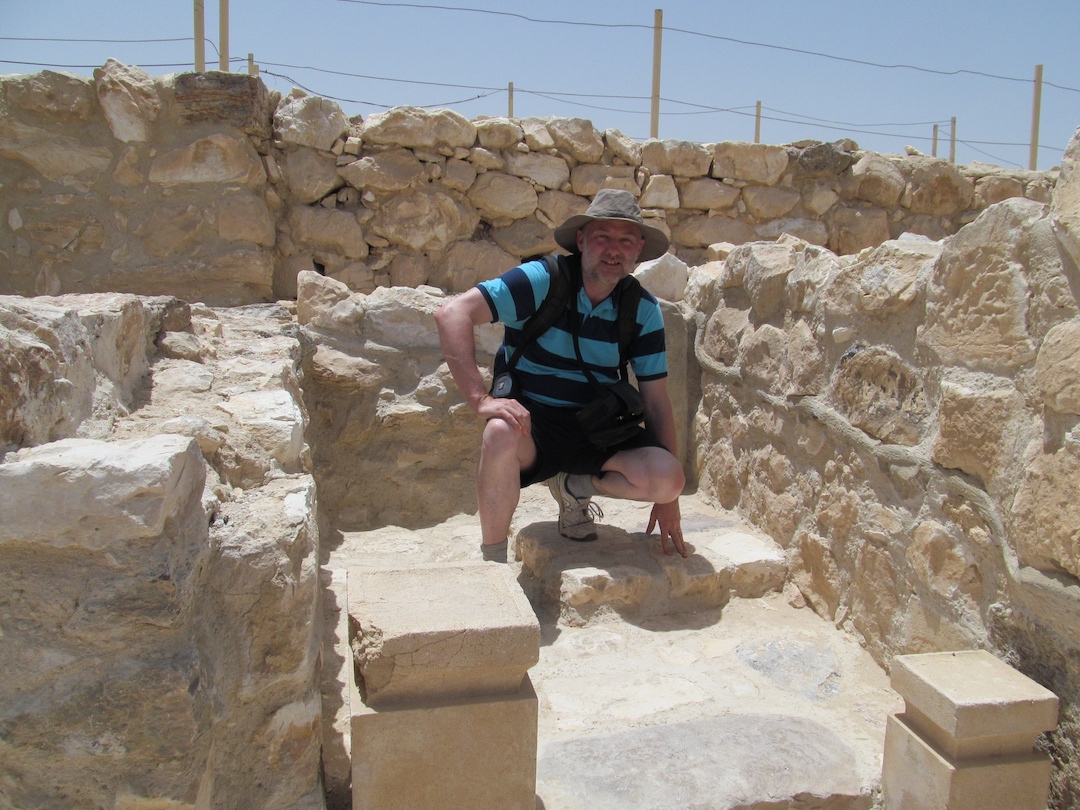Standing in the ‘Holy of Holies,’ I had this strange feeling that I really ought not be be there. Indeed, I thought also that it really ought not to be there either, for I was about 30 miles south of Jerusalem at Tel Arad.
Not far from the southern end of the Dead Sea, and just six miles away from the modern town of Arad, the tel preserves the finest example of an Early Bronze Age town known to exist. The site is on two levels, divided between a lower city and an upper citadel which commands excellent views across the Negev to the start of the Judean mountains.
The lower city
It was first inhabited during the Chalcolithic period, around 4000 BC, but the main Canaanite Bronze Age settlement was occupied between approximately 2900 and 2700 BC and became an important post on key trading routes. It is the best example in Israel of an Early Bronze Age city with visible evidence of deliberate planning of streets and water conduits.
The site appears to have been abandoned for about 1,500 years and not reinhabited until the 11th century BC, after Israel had taken possession the land, when occupation centred on the upper level of the site.
The citadel
The upper citadel was constructed during the reigns of David and Solomon. For the Israelites, Arad served primarily in a strategic role, guarding the eastern Negev from nomadic peoples and being in a commanding position on the frontier road to Edom and Elath. A fortress was built on the summit along with a sanctuary, and it is this which I found particularly interesting.
The sanctuary at Tel Arad may well have been modelled after that of Solomon in Jerusalem. An inscription found here, reading “House of Yahweh,” may have referred to either temple, and there are similarities. It was oriented towards the east, had a sacrificial altar, and two incense altars in its ‘most holy place.’
The altar and temple were deliberately disbanded at some point, most likely during the reforms of Hezekiah who “removed the high places … and altars” at the end of the 8th century BC (2 Kings 18:4,22) or possibly during those of Josiah in the 7th century (2 Kings 23). Its presence reminds us of the need for these reforms, as the people of God had lost sight of their God and forgotten his words, and the reason for its later destruction by the Babylonians.
Patrick Boyns
 This article is from BiBloS, a teaching resource of the British Bible School. To read more articles or download the whole of Issue 3, click here.
This article is from BiBloS, a teaching resource of the British Bible School. To read more articles or download the whole of Issue 3, click here.


